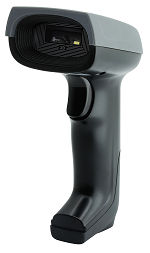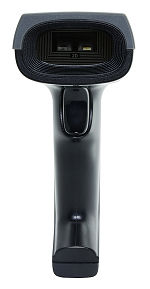Online barcode reader
4/4/2025 1
Please bookmark this page.
A barcode reader (or barcode scanner) is an optical scanner that is capable of reading printed barcodes, decoding the data contained inside the barcode, and transmitting the data to a computer. As is the case with a flatbed scanner, it is composed of a light source, a lens, and a light sensor for converting optical impulses to electrical signals. Additionally, virtually all barcode readers have decoding circuitry that analyzes the picture data given by the sensor and outputs the barcode's information to the scanner's output port.
Pencil-based readers
Pen-style readers are made up of a light source and a photodiode that are attached to the tip of a pen. To read a barcode, the individual holding the pen must move the tip at a roughly regular pace over the bars. As the tip passes each bar and space in the printed code, the photodiode detects the intensity of the light reflected back from the light source. The photodiode creates a waveform that is utilized to determine the barcode's bar and spacing widths. Because dark bars absorb light and white spaces reflect it, the voltage waveform created by the photodiode is a representation of the barcode's bar and space pattern. The scanner decodes this waveform in a similar fashion to how Morse code dots and dashes are deciphered.
Scanners using lasers
Scanning back and forth over the barcode with the laser beam. As with the pen-type reader, a photodiode is used to determine the intensity of light reflected by the barcode. In both pen readers and laser scanners, the reader's light is quickly modulated with a data pattern, and the photodiode receive circuitry is configured to detect only signals with the same modulated pattern.
CCD monitors (also known as LED scanners)
CCD readers use an array of hundreds of tiny light sensors lined up in a row in the reader's head. Each sensor determines the brightness of the light directly in front of it. Each light sensor in the CCD reader is incredibly tiny, and since hundreds of sensors are lined up in a row, the reader generates a voltage pattern equal to the pattern seen in a barcode by successively measuring the voltages across each sensor in the row. The critical distinction between a CCD reader and a pen or laser scanner is that the CCD reader measures ambient light produced by the barcode, while pen or laser scanners measure reflected light of a particular frequency generated by the scanner. LED scanners may also be manufactured using CMOS sensors and are gradually displacing previous laser-based readers.
Readers equipped with cameras
Two-dimensional image scanners are a more recent advancement in barcode reader technology. They decipher the barcode using a camera and image processing algorithms.
Video camera readers use tiny video cameras equipped with the same CCD technology as CCD barcode readers, but instead of a single row of sensors, a video camera employs hundreds of rows of sensors stacked in a two-dimensional array to form a picture.
Large field-of-view readers use high-resolution industrial cameras to concurrently collect several bar codes. All bar codes visible in the image are decoded instantaneously (ImageID patents and code generation tools) or via the use of plugins (for example, the Barcodepedia utilized a flash application and a webcam to query a database), have been realized choices for addressing the specified tasks.
Scanners for barcodes that are omnidirectional
Omnidirectional scanning employs "a series of straight or curved scanning lines with varying directions in the form of a starburst, a Lissajous curve, or other multiangle arrangement are projected at the symbol, and one or more of them will be able to traverse all of the symbol's bars and spaces, regardless of orientation."
Almost every one of them makes use of a laser. Unlike simpler single-line laser scanners, they generate a pattern of beams with variable orientations, which enables them to read barcodes given at various angles. The majority of them produce their complicated scan patterns using a single spinning polygonal mirror and an array of numerous stationary mirrors.
Omnidirectional scanners are well known in supermarkets, where packages are passed over a glass or sapphire window. There are a variety of omnidirectional units available for a variety of scanning applications, ranging from retail applications where barcodes are read just a few centimetres away from the scanner to industrial conveyor scanning where the unit may be several metres or more away from the code. Additionally, omnidirectional scanners are superior at reading barcodes that are badly written, wrinkled, or even ripped.

